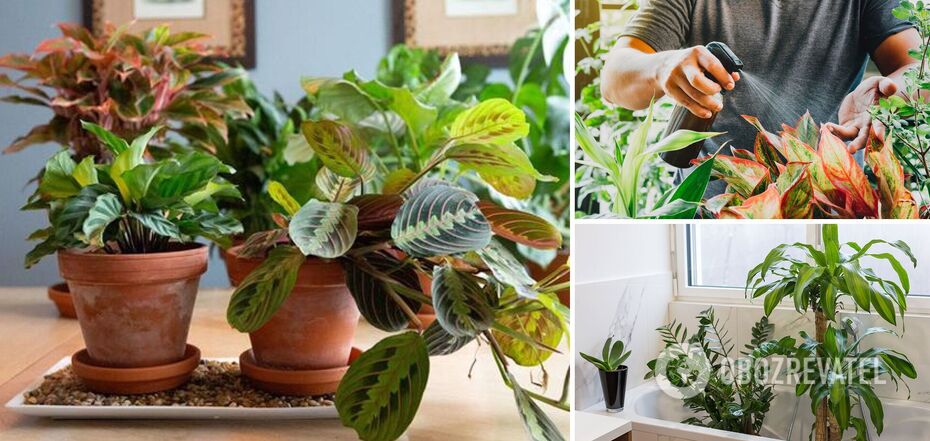Entertainment
How to increase humidity for indoor plants to protect them from heating
Many houseplants come from tropical regions where it is always warm, sunny and humid. This is one of the main difficulties of growing them at home. Due to dry air, especially in winter when the heating dries out the atmosphere in the room, the flowerpots begin to wither.
Bloomscape experts found out how to help this problem. They have compiled a list of the most effective ways to provide plants with the level of humidity they need.
How do you know if the air is too dry for a plant?
There is a clear list of signs that your home garden needs more humidification. So, it is too dry if:
- the edges of the leaves have started to dry out and turn brown;
- the leaves lose their elasticity and droop, and sometimes even turn yellow and fall off;
- the leaves become brittle to the touch.
If you notice any of these signs, it's time to take action.
Buy a humidifier
A small gadget that sprays tiny droplets of water into the air distributes moisture in the form that plants need most. It will also benefit your skin and respiratory tract, which suffer from dryness in winter.
Spray your plants regularly
We should warn you right away that the effect of spraying will be temporary, so you will have to repeat the procedure quite regularly. In addition, this procedure is contraindicated for plants with "fluffy" leaves, such as Saintpaulias. The pile on the leaves will retain moisture, which can cause them to rot. And lastly, use only special sprayers for plants that spray moisture delicately. An ordinary household sprayer is not suitable for this task.
Make a humidification tray for your plants
This is a good way to increase the humidity locally - just near your plants. Take a tray a few centimetres deep, which is also larger than the diameter of the plant pot. It can even be shared by several flowerpots, so you can create stylish arrangements. Pour pebbles, crushed stone, expanded clay or decorative stones into the pan, pour enough water to almost cover the filler, and place the flowerpots on top. This way, the roots of the plant will not come into contact with the water, while the leaves will get moisture from the evaporation. All that remains is to make sure that the tray does not dry out.
Create a microclimate for a group of plants
Gather all the flowerpots that need humid air in an arrangement, with a container of water in the centre. This way, your "pool" will remain invisible and at the same time provide the right level of humidity for a whole group of plants at once. Do not forget to add water to it as it evaporates.
Give your plants a warm shower
The shower we love to take in the morning or in the evening is also loved by plants. It washes away dust and pests from their leaves and fills the leaves with moisture. Before the procedure, be sure to cover the soil with cling film to prevent overflow. And avoid sudden temperature jumps - comfortably warm water is best for washing plants. You can "bathe" your home garden several times a year.
Move the plants to humid conditions
Plants that require high humidity will be more comfortable overwintering in the kitchen or bathroom if there is a window. The air in these rooms is always full of water vapour, which is so necessary for flowerpots.
Earlier, OBOZREVATEL talked about plants that absorb moisture from the air so intensively that they can fight condensation on windows and the development of mould.
Only verified information is available in our Obozrevatel Telegram channel and Viber. Do not fall for fakes!



























